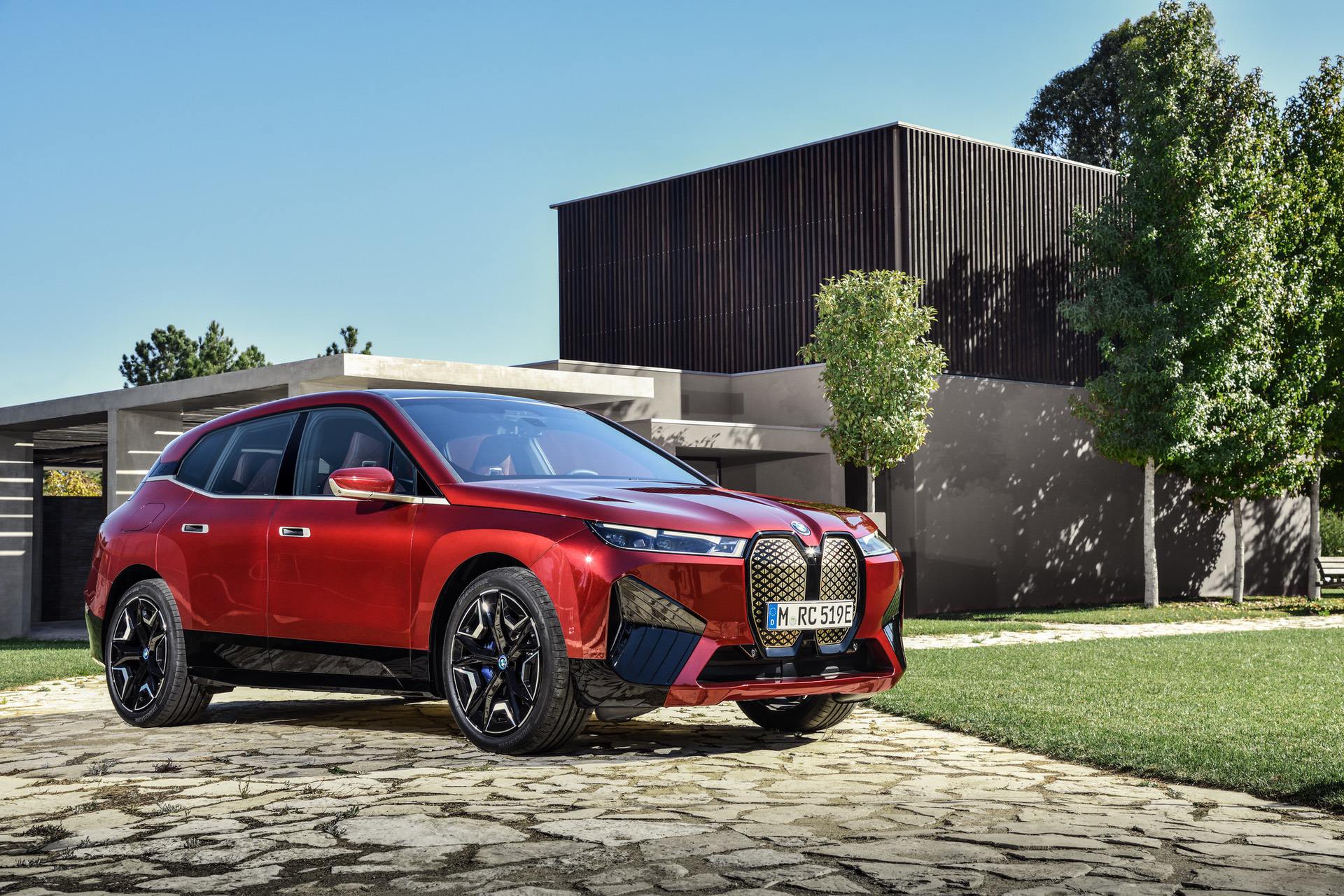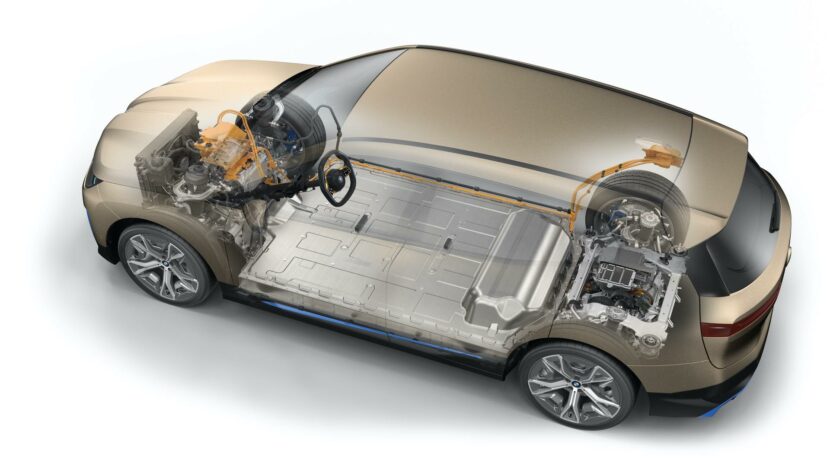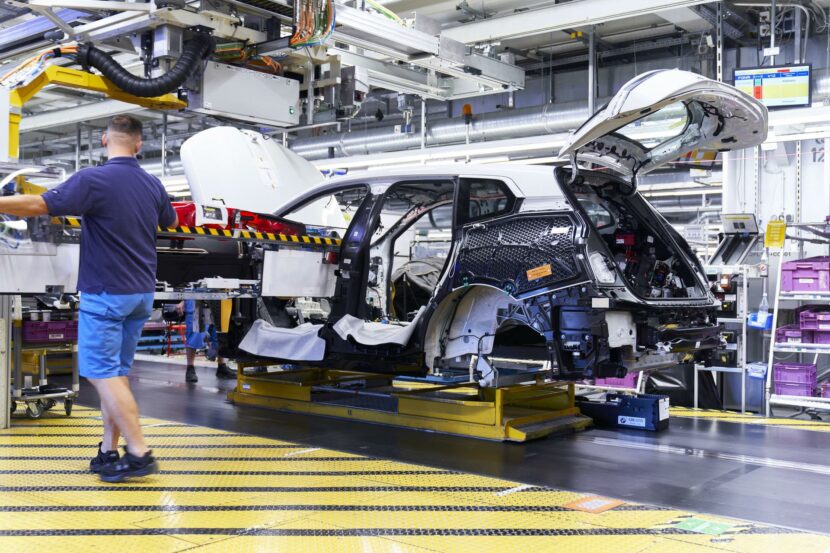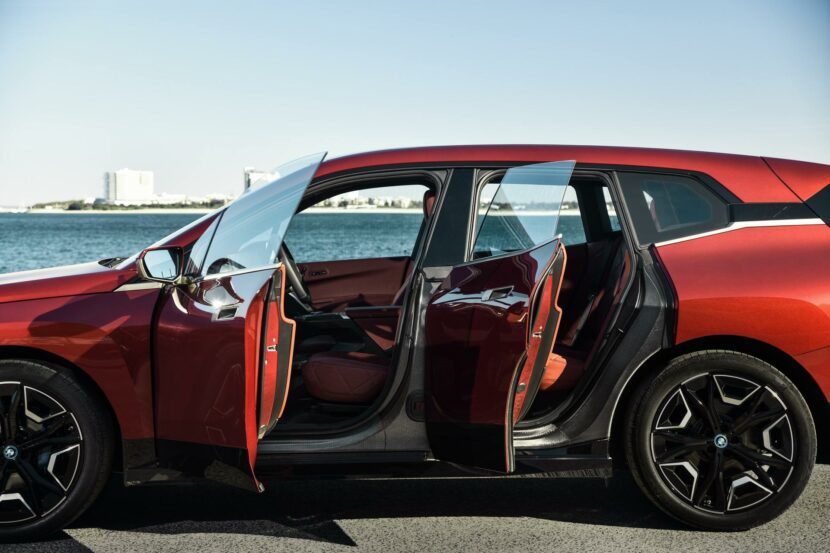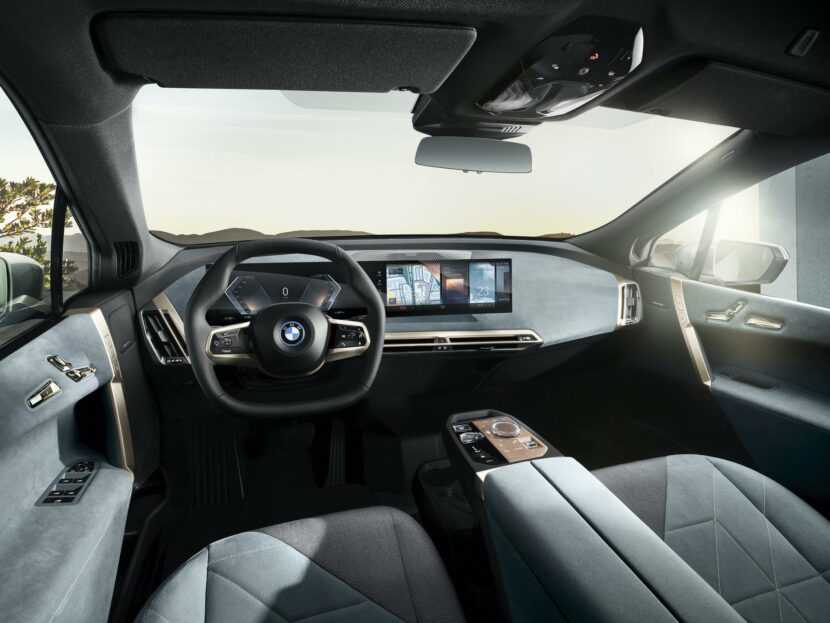When the BMW iX makes its debut next year, it will be the most radical EV from the Bavarian brand since the i3. Just one look at it and it’s clear that the iX is a spiritual successor to the i3, with its floating D-pillar design, fabulous interior and carbon core technology. That last bit is important, as the BMW iX is the first electric Bimmer since the i3 to be built on a bespoke EV architecture. Like the i3, though, it will be the only car to ever use it.
At the moment, all BMWs are built on either one of two scalable internal combustion engine platforms; FAAR or CLAR. The former is a front-wheel drive, transverse engine chassis and the latter is a rear-wheel drive, longitudinal engine chassis. However, the BMW iX will be built on its own, bespoke EV plaform, design from the ground up for it and only it.
Pop open a door on the BMW iX and you’ll notice a similar carbon fiber construction as the BMW i3. However, it’s a bit different on the iX. Rather than a carbon fiber monocoque, like the i3 and all new McLarens, the BMW iX will sport a mix of a carbon fiber cage of sorts and an aluminum space frame. So it’s not as special as the i3 but it’s more special than anything else in BMW’s lineup. It also means that, despite its massive 100 kWh battery pack, it’s relatively lightweight.
Thanks to that new architecture, the BMW iX has quite a few advantages over BMW’s other EVs and hybrids. Its wheelbase is 2.5 cm longer than a BMW X5s, while also having the same length. So it has more interior space and is more stable at speed, without having any larger exterior dimensions. It’s also stiffer than a traditional BMW chassis, due to its extensive use of carbon fiber. Additionally, because its chassis has been built from the ground up solely for EV use, it can fit a proper battery back (the aforementioned 100 kWh unit).
For a size comparison, both the Audi e-tron and Mercedes-Benz EQC (both cars are EVs built on traditional architectures), the BMW iX has a longer wheelbase, more interior volume and less weight. So right from the jump, the iX has an advantage over its main German rivals.
One oddity about the BMW iX is its lack of front trunk, or “frunk” if you want to get cute. The only thing that opens at the front is the BMW Roundel, which pops open to provide a spout for refilling washer fluid. We’re told the reason for this is weight; a front trunk mechanism, with hinges and struts, adds weight. I don’t the few extra pounds makes a big different but, alas, that’s what BMW decided.
There’s only one real problem with this new bespoke iX architecture — it’s the only BMW that will use it.
For some reason, unbeknownst to us, this new high-tech, carbon-infused, bespoke chassis will be a one-and-done deal. After the BMW iX, no other car will be built on it, even after all of the development time and money spent on creating it. Some components will be shared, such as the electric drivetrain, but they’re not iX components, they’re BMW components that are being used on the iX.
We haven’t heard a good answer as to why this is but we’re assuming it was BMW’s plan quite a long time ago, to have different EVs on different bespoke platforms, but plans changed. Now, BMW will be switching all of its cars to one of either two scalable architectures, designed to support both ICE and EV powertrains. This system will be called the Power of Choice, which sounds like a bad Huey Lewis ripoff. This seems like a mistake, as the iX now provides BMW with an excellent EV architecture to use but it’s going the cheapo route and using its jack-of-all-trades platforms. Except a jack-of-all-trades is a master-of-none…
When the BMW iX debuts, it will be a hugely important car for the brand; a make-or-break-type deal. Not only will it be the first all-electric car from BMW in almost a decade but it will also be one that BMW spent a mahoosive amount of money on. So BMW needs the iX to be a success. Thanks to its high-tech, bespoke chassis, it seems like it has a good chance at being just that.
[Source: Sport Auto]


